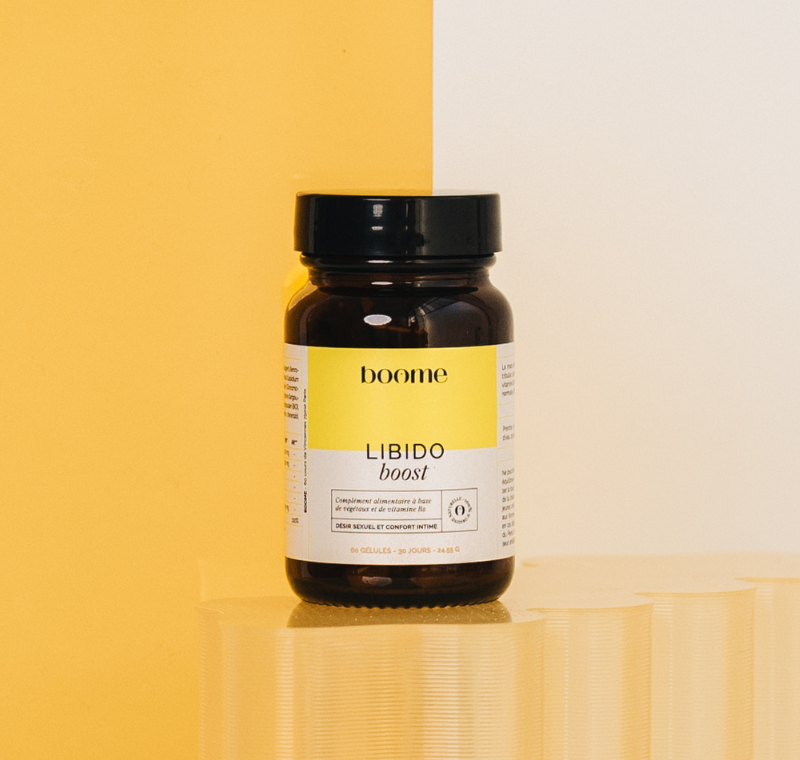
Have you noticed light bleeding outside of your period and are wondering if it's normal? Whether it's a simple hormonal reaction or a sign that shouldn't be ignored, spotting always raises questions. Is it a symptom of pregnancy? A hormonal imbalance? A more serious problem? Don't panic: in this article, we'll review everything you need to know about this mysterious spotting. When it's benign, when to worry... and, above all, how to react effectively. Ready to clear up any doubts? Let's go!
What is spotting?
Spotting is a term used to describe light vaginal bleeding that occurs outside of menstruation. Unlike menstruation, this blood loss is generally light and does not necessarily require sanitary protection. While often benign, this phenomenon can sometimes signal a hormonal imbalance or a latent medical problem.
When does spotting appear?
Spotting can occur at different stages of the menstrual cycle. For example, some women may notice light vaginal bleeding at the beginning or end of their period. It can also occur on day 14, around the time of ovulation.
Outside of the cycle, this blood loss often accompanies hormonal changes in the female body:
- during adolescence, a period known for its strong hormonal variations;
- in pregnant women, during the first days of pregnancy (this is called implantation spotting);
- in premenopause;
- during a period of hormonal transition linked to the contraceptive method;
- postpartum, before the return of menstruation .
In short, you'll have understood: spotting is a naughty thing! And this vaginal bleeding can appear during, or outside of, your period... with no apparent connection to it.

Achat express
How long does spotting last?
The duration of these types of bleeding depends on the person experiencing them. From a few hours to up to 3 days, depending on the situation! Because, unlike menstrual bleeding, spotting doesn't follow a specific pattern, more or less "regulated" over time (as they say).
In some cases, vaginal spotting is occasional and disappears quickly. For example, when it's ovulatory, it usually only lasts a day. On the other hand, intermittent bleeding that persists for several days, or that recurs frequently... This may warrant a medical consultation (we'll come back to this in our article, stay tuned!).
What are the differences between spotting and periods?
It's not always easy to distinguish between spotting and periods! However, there are real differences between each type of bleeding.
First of all, spotting and periods differ in the amount of blood lost. Menstruation resembles heavy bleeding, which requires wearing sanitary protection to avoid staining. Spotting, on the other hand, manifests itself more as light bleeding on underwear or toilet paper. It doesn't follow the same pattern as periods. Because, as you know, a normal period often starts with a light flow, then the amount of bleeding increases, becomes heavier, and then gradually decreases.
Second important point of distinction: color! Yes, spotting can be:
- light red in color;
- brown in color;
- pink in color.
While menstruation is initially bright red before darkening towards the end of the cycle.
Finally, periods occur according to a regular pattern, which corresponds to the menstrual cycle. Spotting, on the other hand, can appear at any time of the month, without following a specific timeframe.
What causes spotting?
Hormonal fluctuations, gynecological problems... Many different factors cause spotting. These include:
- Hormonal contraception: When you start or stop taking hormonal contraception (birth control pill, hormonal IUD, etc.), you disrupt your hormonal balance. This increases your chances of experiencing intermenstrual bleeding, especially in the first few months of use.
- Ovulation : we told you, some women may observe slight spotting around the 14th day of the cycle, linked to the rupture of the ovarian follicle.
- The appearance of uterine fibroids or polyps : these benign lesions, located in the uterus, can cause abnormal bleeding outside of periods.
- Cervical irritation : sexual intercourse, pap smears, IUD insertion, etc. All of these causes can increase the risk of spotting.
Is spotting a sign of pregnancy or miscarriage?
Yes, pregnancy spotting (or implantation spotting) exists! Because, a few days after fertilization, the embryo implants in the uterus. And this can cause light bleeding for one to two days. You can recognize this, too, by its color: this vaginal discharge is generally pinkish or brownish. What's more, it occurs about a week before the expected date of your period.
However, this type of spotting, especially in the first trimester of pregnancy , can also become a warning signal. Especially if you notice:
- persistent bleeding;
- abdominal pain.
These signs may indicate a threatened miscarriage or ectopic pregnancy. In these cases, don't hesitate for a second and rush to see a doctor or midwife immediately.
Are you pregnant and worried about a miscarriage? Our article, How to Know if You're Having a Miscarriage, provides you with the keys to better understanding the signs to watch for.
Can stress cause spotting?
Ditto: stress is one of the factors that can influence the cycle... And therefore, cause a risk of spotting. Why? Because intense stress disrupts the part of the brain that regulates hormones. If you're exposed to it, you risk producing excess cortisol. This can lead to hormonal imbalance and unexpected intermenstrual bleeding.
When to worry?
Rest assured: in the (vast) majority of cases, vaginal spotting remains benign. And therefore, there's no reason to worry! However, certain signs could be abnormal. Therefore, they should prompt you to seek medical help.
For example, if spotting persists, becomes frequent, or lasts more than a few days, it may indicate hormonal disorders or a genital infection. Likewise, in postmenopausal women, spotting is never trivial and always requires a minimum of investigation.
So, if the appearance and intensity of your bleeding seem strange to you, pay attention to it. For example, if you notice unusual symptoms like:
- heavy discharge in your panties;
- bright red spotting accompanied by clots;
- an onset of fever;
- great fatigue;
- minor pains;
- or even severe pain in the abdomen.
These may be signs of a missed pregnancy or some form of infection. In either case, you need to get medical help quickly.
Are you pregnant or planning a baby? Looking to give your body a boost? Our pregnancy vitamins are waiting for you!
How to stop it quickly?
Stopping breakthrough bleeding depends primarily on its cause. For example, if your bleeding is related to your hormonal contraception, you might be advised to wait a few months to allow your body to adjust as best it can.
However, if this light spotting continues after this period, don't let it go. It could really impact your lifestyle. You can then ask your doctor for a gynecological exam or a hormonal assessment, to possibly adjust your contraception or suggest an alternative.
If spotting only persists occasionally, there are a few things you can do to reduce it naturally:
- Avoid stress through relaxation, yoga or meditation.
- Adopt a healthy lifestyle with regular sleep, a balanced diet and physical activity.
- Take dietary supplements, such as iron or vitamin B6, which can help regulate your cycle.
In short, don't panic: spotting is a common occurrence and, in most cases, nothing to worry about. However, try to pay attention to its frequency, duration, and possible symptoms. And, if in doubt, seek medical advice to understand the cause. In the meantime, listen to your body and take care of your lifestyle: these are the best habits to adopt for a balanced cycle!











